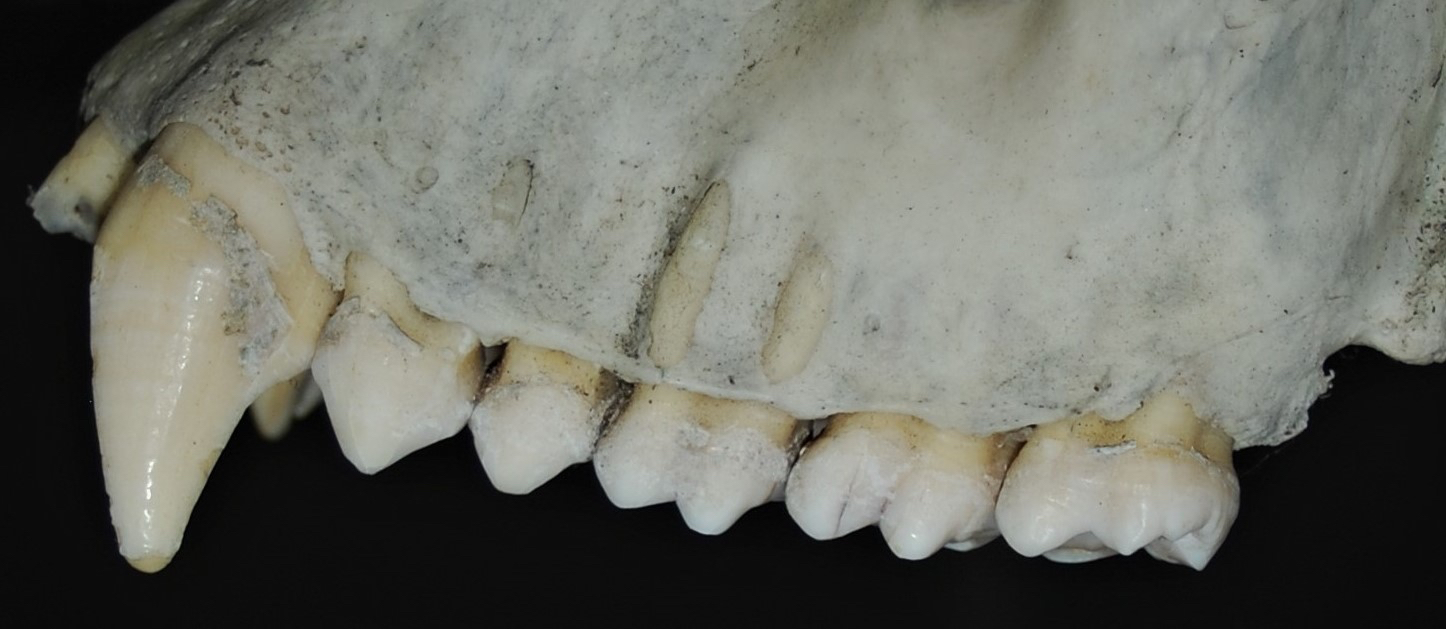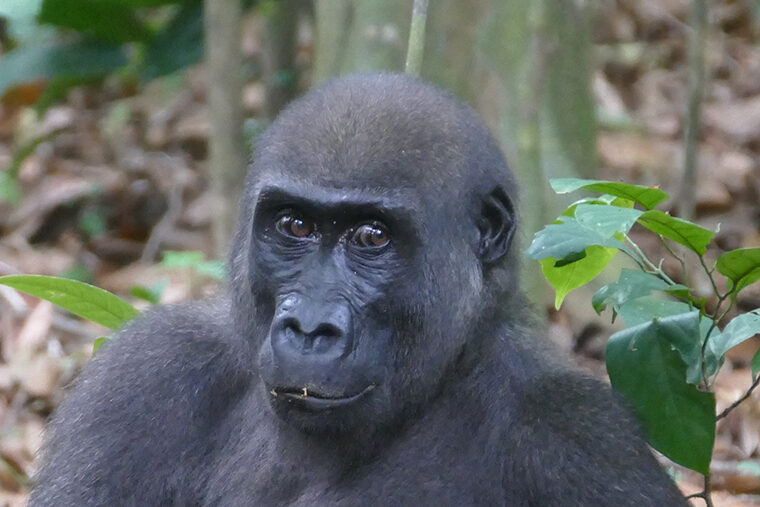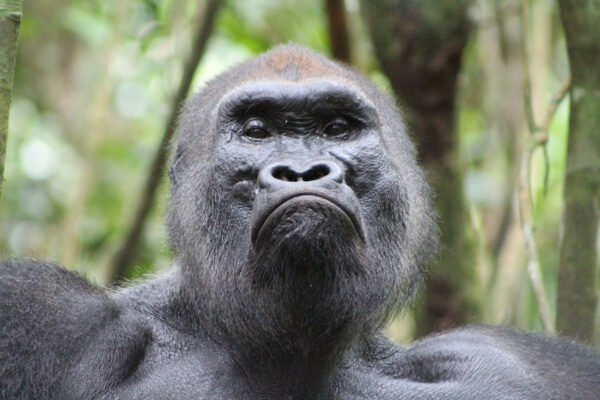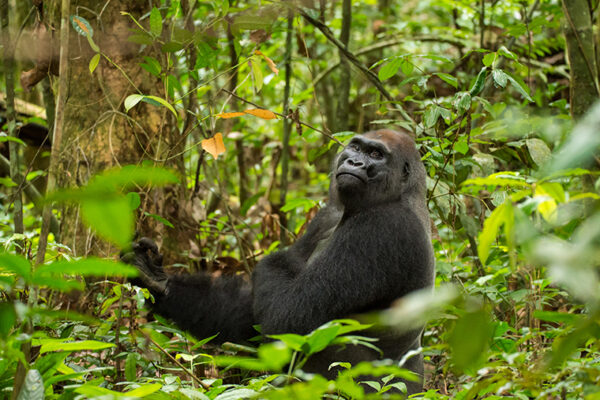Despite their large body size, gorillas are known to have a vegetarian diet consisting almost exclusively of leafy vegetation and fruit. Their teeth are large and high-crested when compared with other great apes, which is usually seen as an adaptation to spending a large amount of time chewing tough fibrous plant material. In contrast, their teeth are not well adapted to eating hard objects, such as nuts encased in a woody shell, because the high crests on their molar teeth would be at risk of damage.

So imagine researchers’ surprise when they found gorillas shelling African walnuts.
A team of scientists from Washington University in St. Louis and the Max Planck Institute for Evolutionary Anthropology have observed a population of western lowland gorillas in Loango National Park, Gabon, using their teeth to crack open the woody shells of Coula edulis nuts.
Adam van Casteren, lecturer in biological anthropology in Arts & Sciences, is first author of a new study in the American Journal of Physical Anthropology that combines direct feeding observations with mechanical tests of seed casings to show that gorillas, contrary to prior science, may be endangering their teeth, years on end, to access this energy-rich food source.
“I’ve never tasted the kernel myself. It looks and feels like moist coconut, but the kernel is a little bundle of nutrients,” van Casteren said. “Compared to the leaves and fruit it is high in protein and fat, meaning when it is available these nuts are likely a welcome boost to a gorilla’s diet.”
“Other animals that are known to crack through the nuts are elephants and bush pigs that both have very powerful bites,” he said. “Rodents are also known to use their sharp incisors to gnaw through the hard outer shell. Chimpanzees famously crack open the nut using tools. Humans have also been known to utilize the nuts in cooking. Now we know that gorillas are using their powerful chewing muscles to break through the woody shell.”
The researchers were surprised to learn that the gorillas at Loango are regularly gambling with their teeth and taxing them close to their predicted mechanical limits. While some primates, like chimps, protect their teeth by using tools to crack open nuts, it appears that the gorillas at Loango National Park rely on brute strength to break through the woody shells of Coula edulis nuts. The fact they do this year after year indicates that gorilla teeth may be stronger than previously thought.
Discovering that some gorillas routinely partake in nut cracking with their teeth also could influence the way researchers interpret the fossil remains of human ancestors, the researchers said.
Despite having teeth seemingly shaped for a leafy diet, the study shows that western lowland gorillas are capable of routinely cracking nuts — which has important implications for the ways researchers predict the diet of human ancestors based on the shape of their teeth.

“I was amazed when we first observed the nut eating by the gorillas,” said Martha Robbins, research scientist at the Max Planck Institute for Evolutionary Anthropology and senior author on the paper. “We can not only see it, but also hear it, as the shell gives way to the incredible strength of their bite. Gorillas obviously have large, powerful jaws, but we did not expect to see this because their teeth are not well-suited to such behavior.”
Coula edulis nuts, otherwise known as Gabon nuts or African walnuts, are encased in a hard, woody shell that takes around 271 kg of force to crack. Yet for the three months of the year that the nuts are available, the gorillas of Loango National Park concentrate their feeding on the energy-rich kernels, spending up to three hours per day chomping through nuts.
This is surprising as animals that eat very hard food items tend to have strong, rounded molars that act like a pestle and mortar and are very efficient at cracking brittle foods. Like other foliage eaters, gorilla teeth have higher crests providing extra cutting edges for slicing tough material. Under the monumental bite force required to crack nuts, teeth with sharp edges are prone to break, meaning they may be worn away quickly.
The research also suggests that western lowland gorillas have much greater dietary breadth than previously believed. The absence of nut-cracking behavior in other populations of western gorillas where the nuts also are present suggests the behavior may be cultural, and gorillas need to observe and learn the behavior from other group members.


